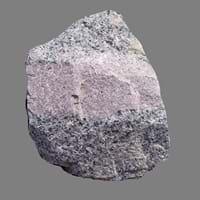Definition
Diatomite is a fine-grained sedimentary rock which is formed from consolidated diatomaceous earth
Aplite is a fine-grained granite composed mainly of feldspar and quartz
Discoverer
Unknown
Unknown
Etymology
From diatom + -ite1
From German Aplit, from Greek haploos simple + -ite
Class
Sedimentary Rocks
Igneous Rocks
Sub-Class
Durable Rock, Soft Rock
Durable Rock, Hard Rock
Group
Not Applicable
Plutonic
Other Categories
Fine Grained Rock, Opaque Rock
Fine Grained Rock, Opaque Rock
Texture
Clastic or Non-Clastic
Granular, Graphic
Color
Grey, White, Yellow
Black, Grey, Orange, Pink, White
Durability
Non-Durable
Durable
Appearance
Soft
Veined or Pebbled
Interior Uses
Decorative Aggregates, Homes, Interior Decoration
Bathrooms, Countertops, Decorative Aggregates, Entryways, Floor Tiles, Homes, Hotels, Kitchens, Stair Treads
Exterior Uses
Garden Decoration, Paving Stone
As Building Stone, As Facing Stone, Bridges, Paving Stone, Near Swimming Pools, Office Buildings, Resorts
Other Architectural Uses
Curbing
Curbing
Construction Industry
As Dimension Stone, Cement Manufacture, Construction Aggregate, for Road Aggregate, Landscaping, Making natural cement, Source of calcium
As Dimension Stone
Medical Industry
Not Yet Used
Not Yet Used
Antiquity Uses
Artifacts
Artifacts, Monuments, Sculpture, Small Figurines
Commercial Uses
Alumina Refineries, Animal feed filler, As a Feed Additive for Livestock, Creating Artwork, Drawing on blackboards, Fire resistant, Gymnasts, athletes and mountain climbers use for grip, In aquifers, Soil Conditioner, To ignite fire, Used as a filter medium, Used as an insecticide, Whiting material in toothpaste, paint and paper
Curling, Gemstone, Laboratory bench tops, Small Sculptures, Tombstones
Types
Not Available
Not Available
Features
Clasts are smooth to touch, Is one of the oldest rock, Smooth to touch, Very fine grained rock
Available in lots of colors, Available in Lots of Colors and Patterns, Is one of the oldest rock
Archaeological Significance
Monuments
Not Yet Used
Used
Famous Monuments
Not Applicable
Data Not Available
Sculpture
Not Yet Used
Used
Famous Sculptures
Not Applicable
Data Not Available
Pictographs
Used
Not Used
Petroglyphs
Used
Not Used
Figurines
Not Yet Used
Used
Formation
Diatomite rock formed from the skeletal remains of single celled plants called diatoms. When diatoms die, their skeletal remains sink to the bottom of lakes and oceans etc. hence forming diatomite deposit.
Aplites belong to intrusive igneous rocks which are mostly quart and alkali feldspar and are formed from residual eutectic granitic liquids and represent the final crystallization products of magma.
Mineral Content
Calcite, Clay, Clay Minerals, Quartz, Sand
Amphibole, Biotite, Feldspar, Hornblade, Micas, Muscovite or Illite, Plagioclase, Pyroxene, Quartz
Compound Content
Ca, NaCl, CaO
Aluminium Oxide, CaO, Iron(III) Oxide, FeO, Potassium Oxide, MgO, MnO, Sodium Oxide, Phosphorus Pentoxide, Silicon Dioxide, Titanium Dioxide
Types of Metamorphism
Not Applicable
Burial Metamorphism, Cataclastic Metamorphism, Hydrothermal Metamorphism, Regional Metamorphism
Types of Weathering
Biological Weathering, Chemical Weathering, Mechanical Weathering
Chemical Weathering, Mechanical Weathering
Types of Erosion
Chemical Erosion, Coastal Erosion, Wind Erosion
Chemical Erosion, Coastal Erosion, Wind Erosion
Grain Size
Very fine-grained
Very fine-grained
Fracture
Not Available
Not Available
Porosity
Highly Porous
Less Porous
Luster
Dull
Dull to Pearly to Subvitreous
Compressive Strength
Not Available
Cleavage
Non-Existent
Not Available
Toughness
1
Not Available
Specific Gravity
2.3-2.4
2.6
Transparency
Opaque
Opaque
Density
2.49-2.51 g/cm3
2.6 g/cm3
Resistance
Heat Resistant
Heat Resistant, Wear Resistant
Deposits in Eastern Continents
Asia
Brunei, India, Indonesia, Malaysia, Singapore, Thailand, Vietnam
China, India, Iran, Saudi Arabia, Sri Lanka, Taiwan, Thailand, Turkey, Vietnam
Africa
Cameroon, Chad, Ghana, Kenya, Malawi, Sudan, Tanzania, Togo, Zambia, Zimbabwe
Angola, Egypt, Madagascar, Namibia, Nigeria, South Africa
Europe
England, France, Germany, Spain, United Kingdom
Austria, Belgium, Finland, France, Germany, Italy, Norway, Sardinia, Spain, Switzerland, The Czech Republic, Venezuela
Others
Not Yet Found
Not Yet Found
Deposits in Western Continents
North America
Canada, USA
Canada, USA
South America
Colombia
Not Yet Found
Deposits in Oceania Continent
Australia
Adelaide, New Zealand, Queensland, Tonga, Victoria, Yorke Peninsula
Not Yet Found
All about Diatomite and Aplite Properties
Know all about Diatomite and Aplite properties here. All properties of rocks are important as they define the type of rock and its application. Diatomite belongs to Sedimentary Rocks while Aplite belongs to Igneous Rocks.Texture of Diatomite is Clastic or Non-Clastic whereas that of Aplite is Granular, Graphic. Diatomite appears Soft and Aplite appears Veined or Pebbled. The luster of Diatomite is dull while that of Aplite is dull to pearly to subvitreous. Diatomite is available in grey, white, yellow colors whereas Aplite is available in black, grey, orange, pink, white colors. The commercial uses of Diatomite are alumina refineries, animal feed filler, as a feed additive for livestock, creating artwork, drawing on blackboards, fire resistant, gymnasts, athletes and mountain climbers use for grip, in aquifers, soil conditioner, to ignite fire, used as a filter medium, used as an insecticide, whiting material in toothpaste, paint and paper and that of Aplite are curling, gemstone, laboratory bench tops, small sculptures, tombstones.









